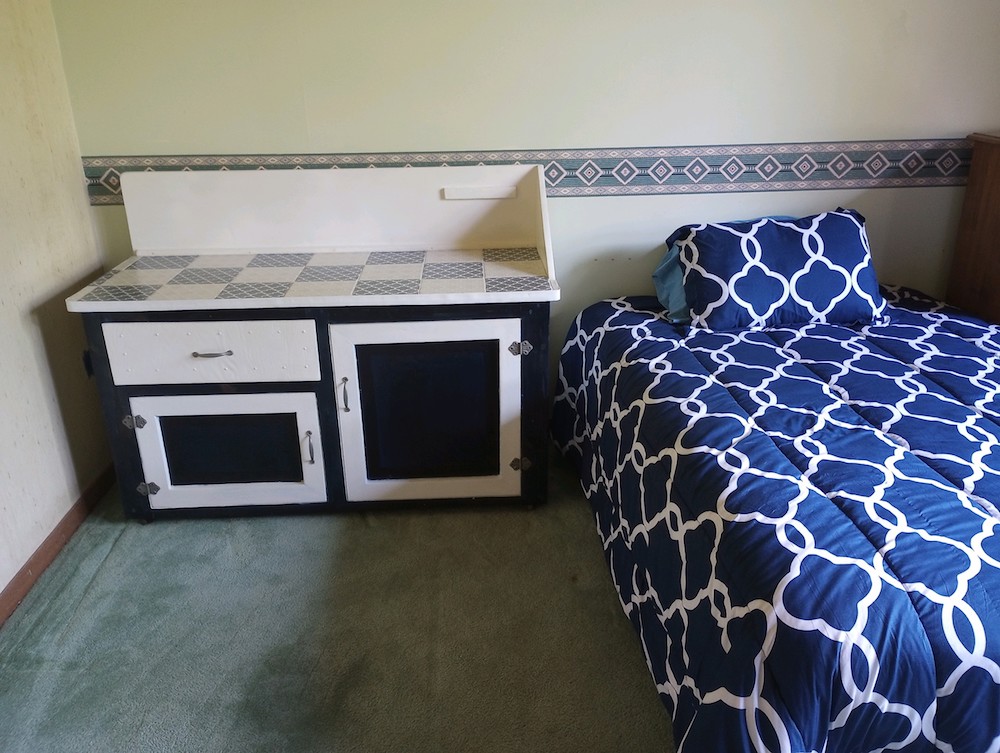Tioga County just experienced the most comprehensive initiative to identify homelessness.
Since 2005, the Point-in-Time (PIT) Count is an annual effort led by the U.S. Department of Housing and Urban Development (HUD) and used to estimate the number of both sheltered and unsheltered individuals experiencing houselessness on a specific night in January. Sheltered individuals are accounted for every year, while unsheltered persons are recorded every other year.
For Tioga County, this year’s count occurred on Jan. 26, from 11 p.m. to 1 a.m. At this time about 27 volunteers bundled up, flashlights in hand, and headed out in groups to various parts of the county to locate and identify unsheltered individuals. Each group also had blankets and emergency clothing packs on hand, as well as direct availability to emergency personnel in case an individual requested help or shelter for the night.
Tioga County has always had individuals that were considered “sheltered” – those that may be housed for a few nights at a local hotel, at an established shelter, or couch surfing (sleeping at a friend’s, family member’s, or acquaintance’s place). However, no numbers have been recorded in years past for those that are “unsheltered” in Tioga. Unsheltered is defined as residing in a place that is not meant for human habitation and includes sleeping outdoors, in a tent, in a vehicle, under a bridge, or behind buildings, among other locations.
According to an official statement from Tioga County Department of Social Services, there were a total of 109 adults and 17 children sheltered in 2022. This year TC DSS will report PIT numbers, which will consist of eight individuals homeless on the evening the PIT was conducted. Numbers are still being added from other organizations and agencies that have a week to report their findings.
Why is this count conducted in January and why in the middle of the night? Francis Bialy, executive director of A New Hope Center in Owego, explained, “If someone is sleeping outdoors during the coldest month of the year, they are truly in crisis. These are the individuals that are most vulnerable and we need to find out how to provide their basic human needs.”
However, this count is still not completely accurate.
“Couch surfing creates a problem when conducting these homeless counts,” Bialy added. “HUD doesn’t classify individuals as being homeless, even though they are just as vulnerable.”
To further explain how this count is still not a completely reliable measure, the volunteers received information from law enforcement during the night of the PIT Count that there were some residential areas with questionable living arrangements. One specific apartment had eight cohabitating adults that night, as well as the possibility of squatters in nearby foreclosed properties. These are individuals that had been spotted in temporary camps or some other make-shift shelter earlier in the week.

Pictured is a stock photo of an empty bedroom at the Catholic Charities transitional home, one of three area shelters. Provided photo.
“While we are glad that they are keeping warm and hopefully safe, we can’t count them as homeless,” Bialy explained. He is hoping that the federal government can adjust their requirements and criteria in coming years to include these situations.
Sister Mary O’Brien, executive director of Tioga County Rural Ministry, added, “When we go searching on a night when it’s cold and there is snow, there aren’t going to be as many sleeping outside. If we did this search in better weather, we would absolutely have a more accurate count.”
Homelessness is not just an “adult” issue. It is also affecting young children and our student population. Local school districts are now reporting several new cases of children under 18 who are couch surfing. Fortunately, most of these children are able to stay off the streets by staying with friends or family members. One of our local school districts currently has 15 children in this category, and while it may be thought that this happens mainly with the older high school kids, all but two in this district are middle school and below.
One important outcome of the PIT Count is that the results will lead the state and county to analyze the availability of necessary resources and shelters as well as directing funding to these services.
A New Hope Center runs a safe house for individuals escaping domestic and sexual abuse situations. Licensed to provide nine beds, Bialy says that they have consistently been full and often over capacity.
“The numbers of people we have had to turn away because of lack of space is horrific,” said Bialy.
The Tioga County Open Door Mission in Owego has eight beds available in their shelter that are for men who are registered in a rehab program. The Mission also hosts a sober-living transitional home that can house four men who are working their way to independent housing arrangements.
Catholic Charities operates a transitional home for women in Apalachin, with five bedrooms. This is open for single women or for a mother with accompanying child. All five rooms are generally full, and women are frequently turned away.
Catholic Charities is committed to providing safe housing to individuals who are experiencing various levels of need. For the last couple of years, the local non-profit has been working with Providence Housing to secure property in Tioga County that could be converted and/or built for housing per community needs. Jo DiFulvio is the Program Supervisor for the transitional home in Apalachin, and is continually weighing options for additional housing within the county.
“The major roadblock is usually getting approval from the Town and Village Boards and, ultimately, residents; and then there’s the long wait for the legal process,” said DiFulvio, adding, “Really, they just need to see how successful our home in Apalachin is and there would be no question as to how badly our county needs more establishments like this.”
The annual PIT count also has a strong emphasis on identifying veterans. According to Michael Middaugh, director of the Tioga County Veterans’ Service Agency, there aren’t any safe options for veterans who need assistance with housing.
“They don’t want to have to pack up and go to another county, and they don’t consider shelters as a safe option”, Middaugh stated. “Many veterans have dogs, not as certified working animals, but as emotional support pets. Shelters won’t let them in. So, these individuals end up sleeping in their cars.”
Middaugh added there are at least three local veterans that he’s been working with that are in this exact situation.
“What this county needs is a housing option that works for low-income men and women who have served our country, and I’ll do whatever I can to see that happen,” Middaugh added.
Middaugh, a former service member, has been working with the Land Bank to try to secure property in Owego to establish much needed veteran-specific housing.
Tioga County frequently transports individuals and families to other counties if there is another shelter that has an opening for their specific situation.
This method of transporting people to shelters and housing arrangements across county borders works both ways.
The Owego Police Department confirmed that neighboring counties, who are also maxed out with shelters and housing options, are purchasing one-way taxi vouchers for individuals to travel to Tioga County. Men, women and families are being provided up to two nights at one of the local motels.
“It’s what happens after those two nights are over that has now become our new situation,” stated an officer from OPD, adding, “These are the people who are camping out in tents or under bridges.”
It was also noted that generally this homeless population doesn’t have an income and are unable to provide a mailing address, which is required to receive benefits. They went on to state that since November our county took in between 20-30 new residents through these means. It is not known if the intake number matches the number of residents that are sent out of our county.
OPD also added that food support for the local homeless population is also somewhat limited, but are fortunate to have weekly lunches with Pastor Bob Harris at Haven of Rest Ministries on North Avenue, ACT dinners at the First Baptist Church on Main Street, and Tioga County Rural Ministry and Catholic Charities with their food pantry and financial support.
Sister Mary from TCRM confirmed that they also provide a food delivery to the local motels once a week for individuals that may find it difficult to find transportation to their office pantry.
“We couldn’t have done this without the collaboration and help from so many,” said Gabriella Ayres. Ayres is a program supervisor for Catholic Charities and accepted this temporary role as lead contact and coordinator for the Tioga County PIT Count.
“We are hoping that with these updated numbers and suggestions for improving the count process, New York State will have a better idea of what our county is experiencing, and we can get some much needed funding to help individuals,” Ayres added.
The numbers for this year are still being turned in and the State will generate a final report in the upcoming months.
Ayres concluded, “It is so encouraging to see these volunteers and organizations band together in solidarity, all with a common concern and compassion, advocating for our neighbors in need. It’s this teamwork and these partnerships that will ultimately help make a difference for Tioga County.”
Several organizations have worked together for the last few weeks to make this year’s PIT Count a success. While Catholic Charities of Tioga headed the operation this year, they were assisted by A New Hope Center, Tioga County Veterans’ Agency, Tioga County Department of Social Services, Owego Police Department, Tioga County Rural Ministry, Tioga Opportunities Inc., Waverly Police Department, Tioga County Sheriff’s Department, Open Door Mission, Haven of Rest Ministries, and many volunteers.
If you are looking for a way to become involved with or donate to area outreach programs, you are encouraged to contact any of the organizations mentioned in this article.



Be the first to comment on "Homelessness in Tioga County, New York "